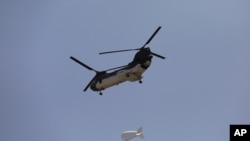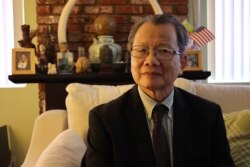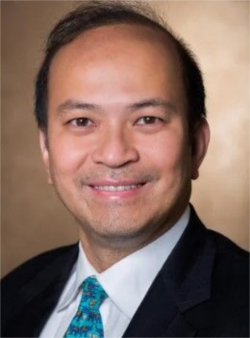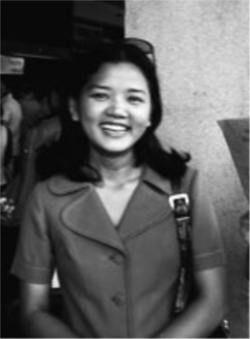“I have not been able to sleep.”
As Dinh Xuan Quan absorbed the news from Afghanistan, the Vietnamese American former international development executive recalled living through the fall of Saigon more than four decades ago.
The images of desperate people trying to flee Kabul evoked painful memories.
“I remember in Vietnam, the refugees, the looting, the chaos in Saigon,” Dinh told VOA Vietnamese from his home in Garden Grove, California, home of the second-largest Vietnamese community in the U.S.
In Kabul, “there’s no problem of looting, that's good,” he said, making a comparison to ransacked banks and homes in Saigon. “With the Taliban, stealing means cutting off your hand.”
For Dinh, who worked in Kabul for a total of seven years between 2004 and 2016 on World Bank, United Nations, U.S. Department of Agriculture and USAID projects, memories of Saigon are punctuated by worries for his Afghan colleagues who became friends.
“Their wives and their daughters can't work or go to school anymore,” said Dinh, who contributes to local Vietnamese-language media outlets as he closes out his 70s. “So my response is filled with many emotions, so many emotions, and I can’t help but think of the year 1975 in Vietnam.”
He’s plowing through the paperwork to sponsor his colleagues for resettlement in the U.S. He is part of a spontaneous nationwide grassroots movement of Vietnamese who are organizing to help Afghan families resettle.
In Seattle, for example, Vietnamese American families posted on Medium on how to help 75 Afghan families because, the group’s statement said, “1975 was a significant year for many Vietnamese Americans” as nearly 130,000 were evacuated and resettled abroad. Countless Vietnamese Americans were sponsored by families and “benefited from the kindness of strangers offering shelter, services and friendship. Here in Washington, our community has an obligation to pay it forward,” said the 75 Viets for 75 Afghan Refugee Families Project.
While few have Dinh’s personal ties to both events, the image of a U.S. military transport helicopter preparing to land on the roof of the U.S. Embassy in Kabul on August 15 evoked the iconic photograph of a similar aircraft on the crowded roof of an apartment building for U.S. staffers often mistakenly identified as the U.S. Embassy in Saigon. That visual reference connected the two episodes for millions worldwide.
PIVOT, a self-described progressive Vietnamese American community organization, said in a statement that the images “brought a haunting sense of déjà-vu. While the situations are different, we have experienced some of what is happening and may be about to happen in that country.”
The group’s statement continued, “Many Vietnamese who should have been evacuated were left stranded in the U.S. Embassy compound and elsewhere. Hundreds of thousands ended up in ‘reeducation’ prison camps, while millions attempted to escape through other means, with a significant percentage perished at sea. It is our moral obligation to do all we can to ensure that the Afghan people do not face a similar or perhaps even worse fate.”
For Baoky Vu, the images of Kabul returned him to the U.S. island territory of Guam, where he was among the 100,000 Vietnamese who landed there temporarily just before and after Saigon fell. Now a resident of Atlanta, he said the viral videos of Afghans flocking to Kabul’s airport, hoping "to be rescued by the U.S. government … brought back the pain we experienced 46 years ago.”
Vu, 54, told VOA Vietnamese, “[Those images] bring sadness. It reminds me of the circumstances surrounding emigration – running, leaving the country and at the same time knowing that the coming regime is a dictatorship.” Vu, politically active in Republican circles, served as an appointee in the George W. Bush administration and as vice chair of DeKalb County Board of Elections. Today, he’s on the State Board of the Technical College System of Georgia.
Dinh Hung Cuong, 78, is a former South Vietnamese Army infantry major who now lives in Fairfax, Virginia. Born in Hanoi, his family fled the communist takeover of the North in 1954 and resettled in the South. Early in April 1975, he was injured while fighting communist forces to secure a supply route in Long An province where he served as Thu Thua district chief until the South collapsed in 1975. He was evacuated by the U.S. to Guam before Saigon fell.
Dinh Hung Cuong told VOA Vietnamese, “I was particularly moved by the scene of Afghans chasing the American aircraft about to take off, and the fact that some people fell from the plane while it was airborne. That horrific scene reminds me of what happened in Da Nang in 1975. People were scrambling to get on an American civilian plane bound for Saigon and some were clinging to the wings. When the plane landed at [Saigon’s] Tan Son Nhat Airport, somebody was found dead in a wheel well.”
Nguyen Kim Khoa, 78, said he was one of the last helicopter pilots to fly out of Bien Hoa Air Base, about 25 kilometers from Saigon, on April 29, 1975. He now lives in Fresno, California, where he worked on community hospital infrastructure such as power plants and air conditioners. That city is about 250 kilometers from the largest Vietnamese community in the U.S., in San Jose, California, which is nearly 30 kilometers from Fremont, home to the largest Afghan community in the U.S.
Born in Haiphong in the North into a family that fled to the South in 1954, he compared the collapse of Afghan forces to his recollections of South Vietnam’s soldiers. “Despite being abandoned by the U.S., we kept fighting in hopes that we could somehow turn the tables and gain support from other countries. We were able to hold out for two more years [after the U.S withdrew] before South Vietnam fell to the communists.”
Nguyen added, “I wasn’t surprised when Afghanistan fell so much more rapidly than South Vietnam. The Afghans felt abandoned and saw no support around them and just lost their will to fight.”
Dinh Van, 73, a former paratrooper with South Vietnam’s infantry turned lathing technician operating heavy machinery, now lives in Houston, Texas, the third-largest Vietnamese community in the U.S. He told VOA Vietnamese that in 1972, he was serving in Quang Tri province, where some of the war’s fiercest battles occurred.
“I think the U.S is largely to blame for the collapse,” the Saigon native told VOA Vietnamese. “The Afghans are a U.S. ally. The U.S. should have made proper judgment about their ability to withstand an attack from
the Taliban and should have planned the withdrawal a bit longer. Now the Taliban is getting all the weapons left by the U.S. I find that really regrettable.”
Phan Binh Minh, who worked for the Vietnam News Agency in South Vietnam, lived through the fall of Saigon.
Now retired and living in Germany with her husband and two children, the 74-year-old woman said that while the political circumstances of the wars in Afghanistan and Vietnam are different, there are similarities in the fall in Kabul and Saigon.
She told VOA Vietnamese, "Looking at the scene in Kabul, I sympathize with the Afghans because they must be in a lot of fear and suffering.”
Today, Dinh Xuan Quan is trying to get in touch with old friends in Afghanistan via the still-functioning internet. “I tried to find them and give them news, and recalled the bewildering days in Vietnam before, April 30, ’75.”
He, like the others, makes comparisons and finds contrasts.
“Vietnam was once a colony of France, while Afghanistan is not a colony of the United States,” he said. He pointed out that the Taliban are anchored by religion, and the North Vietnamese communists who govern Vietnam are atheists.
For now, PIVOT wants to redirect the discussion in the Vietnamese American community.
“There will be plenty of time to debate U.S. foreign policy, military strategy and the question of who ‘lost’ Afghanistan. But now is not the time,” the group said. “It is our responsibility and moral obligation as Americans” to protect the Afghan people. “As the Vietnamese American community has demonstrated, war refugees who are resettled in this country become valuable contributors to the life and culture of this great nation."
Long Nguyen contributed to this report.














